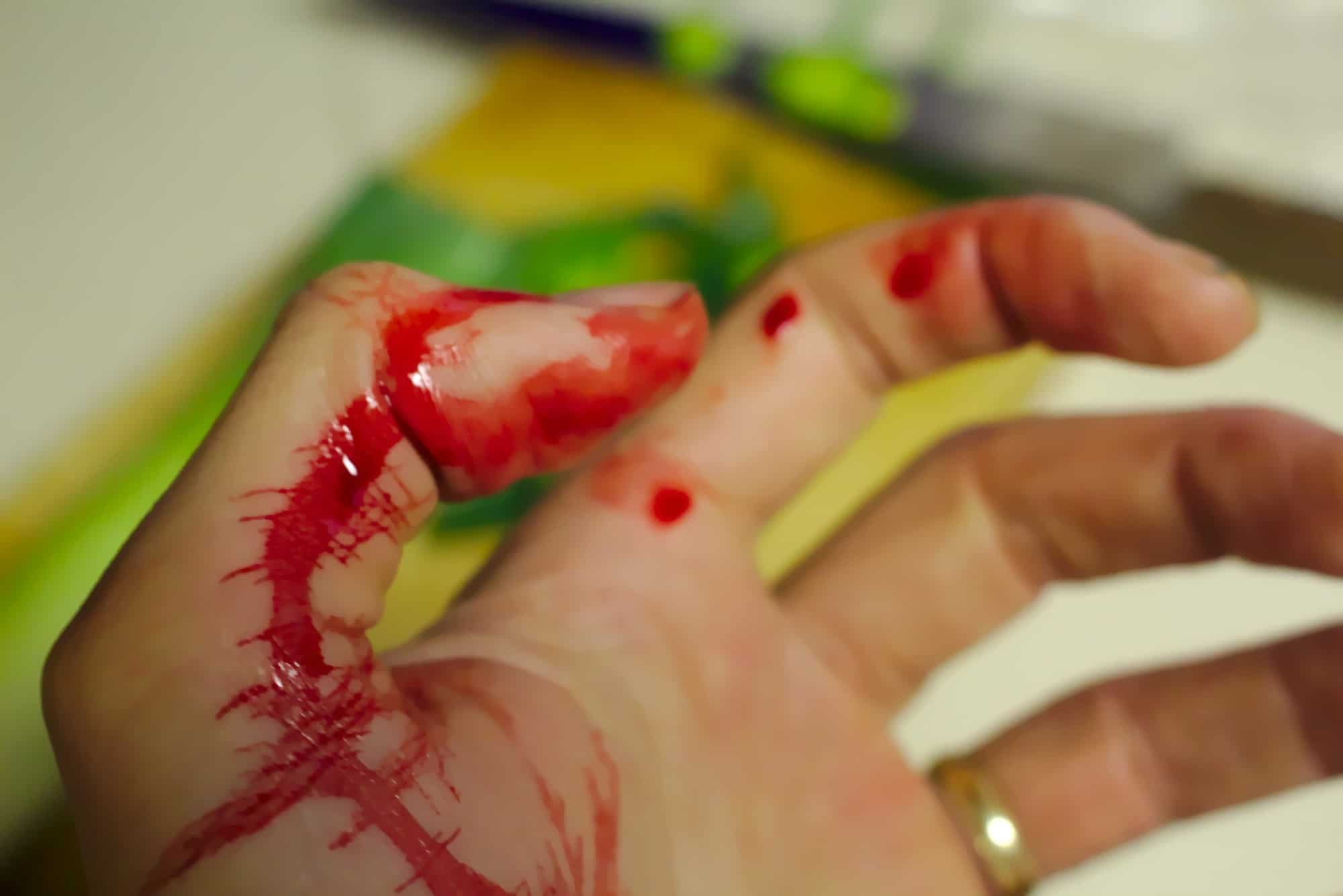While cuts and bruises can be serious, many are not.
In the case of minor scrapes and bruises, there’s no need to visit urgent care or an emergency room. Instead, you can typically treat them at home.
Keep reading to learn more about what to do when you get a cut or bruise, and when you may need to seek medical treatment for an injury.
How to Treat Cuts
First, let’s jump into how to treat minor cuts and scrapes. Also known as lacerations, these are any injury that cuts through layers of the skin. If enough layers are involved, cuts will bleed.
There are only a few things you’ll need to do to treat a cut at home.
1. Wash the Wound
The first thing you need to do with cuts is to wash the area with warm water and a bar of mild soap. Avoid using things like alcohol, hydrogen peroxide, and iodine because these can slow the healing process.
2. Dry the Area
Pat the area around the cut dry with a clean towel. By this time, the cut should have stopped bleeding.
3. Apply Antibiotic Ointment
Carefully apply an antibiotic ointment to the wound. Some people are allergic to certain antibiotics, so be sure to check what you’re using if you’re concerned about this.
4. Keep Cut Clean and Dry
If you’re concerned about the cut getting dirty, you can cover it with a clean bandaid or bandage. Be sure to change this often to avoid infection.
From there, you’ll need to continue to check your injury for signs of infection such as heat, swelling, or discharge.
How to Treat Bruises
Bruises are injuries in which blood vessels are involved, but the skin remains intact. Blood becomes trapped under the skin which causes discoloration.
Here are some ways you can limit the pain caused by bruises and help them fade faster.
- Apply ice immediately after bruise occurs
- Apply heat to increase blood circulation
- Use arnica gel on the bruise
In most cases, you don’t have to do anything for a bruise as long as it’s not painful. These can simply help your body heal more quickly.
When to Seek Treatment for Cuts and Bruises
Here are a few instances in which you should seek medical treatment for cuts:
- Bleeding lasts longer than 10 minutes
- Deep wounds
- Severe pain
- Cuts to the face or neck
- The injury occurred with a rusty or dirty object
Here are some examples of when you should see a doctor for a bruise:
- There’s swelling in the bruise
- Bruising occurs easily or without obvious reason
- The bruise has lasted for longer than a week
Unless a cut or bruise is a clear medical emergency, you can typically visit your primary care physician or an urgent care clinic rather than the hospital.
In Need of Medical Attention?
Now you know how you can treat cuts and bruises at home. As you can see, there are many things you can do which will allow you to avoid an expensive trip to the ER.
If you need to seek treatment for a scrape, bruise, or other condition, contact us today or visit us for a walk-in appointment.

